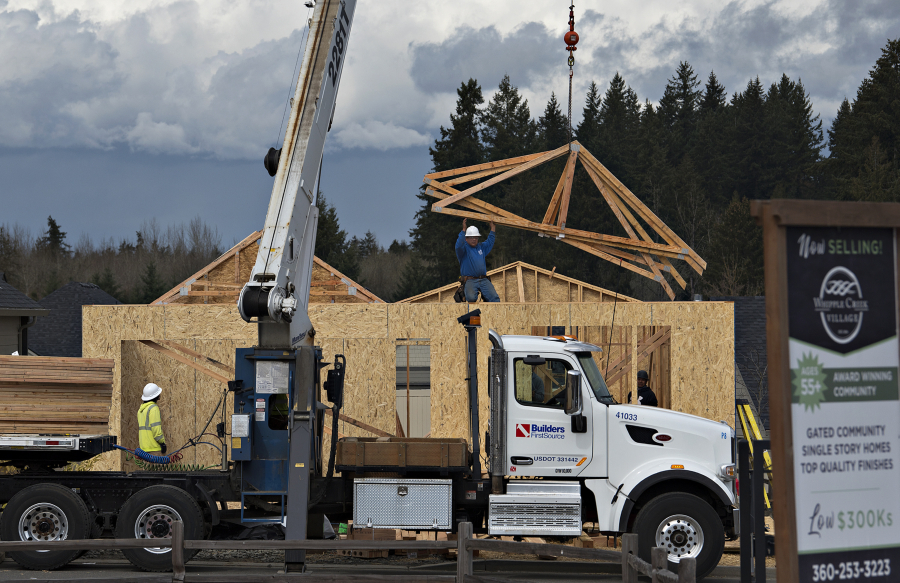The Clark County housing market saw a dip in new listings and pending sales in February, according to the latest report from the Regional Multiple Listing Service. The two figures were closely matched and saw nearly equal declines from January, which local real estate agents took as a signal that the region’s scarce inventory is constraining sales activity.
“(The similar numbers and decline) shows we are literally living hand to mouth when it comes to inventory,” Mike Lamb, a broker at Windermere Stellar in Vancouver, wrote in his own monthly analysis.
The RMLS report lists 711 new listings for February, a decrease of 16.7 percent from the 854 listed in January and an 8.8 percent decrease from the 780 in February 2020. Pending sales, at 700, showed a 16.5 percent decrease from the 838 in January and a 2.5 percent decrease from the 718 in February 2020.
Closed sales were reported at 610, a 4.8 percent increase from January’s 582 and an 18.7 percent jump from the 514 in February 2020.
Terry Wollam of Vancouver-based Wollam and Associates wrote in an email that the low inventory is constraining sales to such a degree that sales activity numbers “are no longer statistics I am paying close attention to.” Most homes sell within a week of being listed, he added, and the lack of inventory is driving prices up through competitive bidding.
Lamb wrote that sales activity was constrained by the mid-February snowstorm in addition to the limited inventory, although he still characterized it as “another really good month” by historical standards. Losing a weekend due to snow “can easily” cause a greater drop in sales activity than what was observed from January to February, he wrote, so “new sales activity was still really good.”
“Still, the lack of listings undoubtedly slowed new sales as much if not more than the weather,” he added, “and that is much more problematic for the long-term health of the market.”
The region’s inventory in months, an estimate of how long it would take to sell through the current backlog of listings, fell from 0.8 on January to 0.7 in February, remaining very near the historic low point of 0.6 reported in December.
“Months in inventory in February 2020 was over 300 percent higher when compared to February 2021, and February 2019 was over 400 percent higher when compared to this February,” Wollam wrote.
Prices continued on an upward climb, with the average sale price rising from $475,400 in January to $482,000 in February and the median jumping from $425,000 to $433,100. That’s a 12 percent increase in the median home price from a year ago, Wollam noted, and a 1.9 percent jump just since January.
Wollam also highlighted the ongoing impact of the COVID-19 pandemic on new home construction, which he said accounts for about 35 percent of new listings in Southwest Washington. Material delays, labor shortages and increased costs from energy code updates are all constraining growth in that segment of the market, he wrote.
“Unfortunately, I do not see any relief in additional housing inventory to meet demand until potentially the first quarter of 2022,” he wrote. “I would expect prices to appreciate at similar levels through the remainder of the year.”
Historically low interest rates are another big driver of demand, he said, and if inflationary indicators increase and interest rates are raised, that could tamp down on demand and relieve some of the pricing pressure – but the inventory is so low that those impacts likely wouldn’t be felt in the current year.
The Vancouver office of John L. Scott Real Estate offered a breakdown of the RMLS data by price range in its own monthly analysis, which showed extreme shortages at nearly every price bracket.
All price ranges below $1 million showed less than one month of inventory remaining, and everything between $250,000 and $750,000 showed half a month or less. Even in houses above $1 million, Scott’s report showed only 1.9 months of supply. CEO J. Lennox Scott also noted that homes below $750,000 account for about 89 percent of sales activity.
The good news is that an influx of new resale listings is expected in March, he added. Lamb also noted that listing activity appeared to be picking up in the first half of the month.
“March historically marks the beginning of the eight month prime-time real estate market,” Scott wrote.




